Extraction from Scotland's only gold mine ramped up
- Published
Scotland's only gold mine is ready to ramp up extraction
As a four-wheel drive truck with a large red metal box on its flatbed rumbles into the gaping mouth of the Cononish mine, near Tyndrum in the west of Scotland, geologist Rachael Paul explains what's happening.
"They can carry explosives in there", she says.
We are heading into the access tunnel at Scotland's only gold mine.
Scotgold Resources has been developing mining work at this site since 2007.
And now the company is aiming to ramp up extraction and wants to develop new sites nearby.
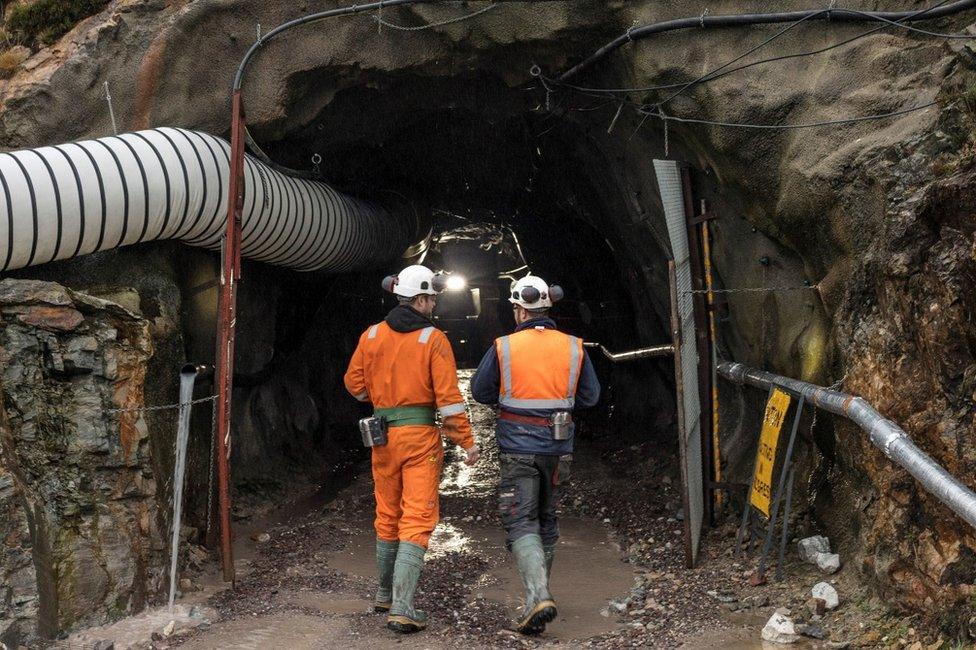
The Cononish mine has been in development since 2007
By the end of this year, it aims to be extracting about 2,000 ounces (57kg) of gold monthly, worth more than £3m.
It's a wild winter's day on the surface, but as we travel further into the mountain, it begins to feel mild, almost warm.
Mapping the vein
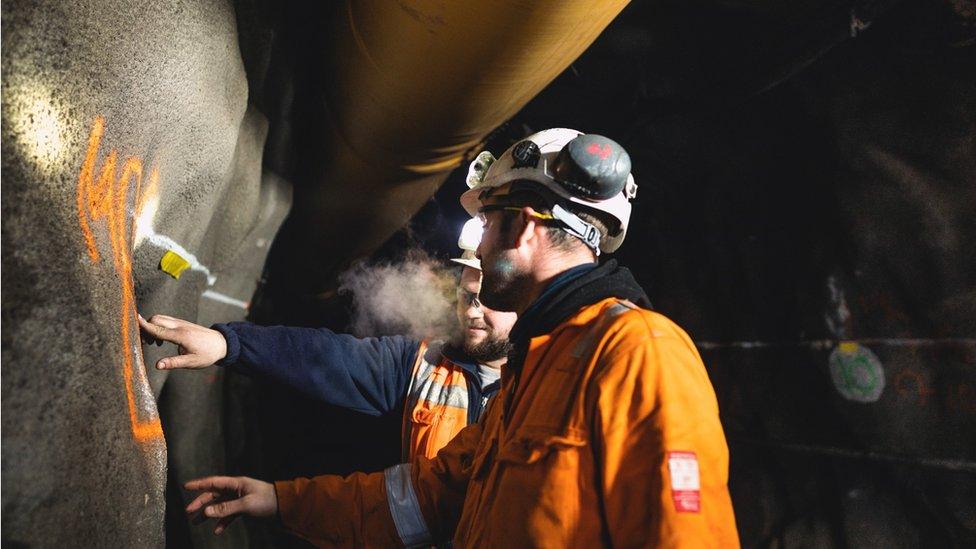
Geologists map the vein and tell the miners where to drill
Rachael points to a thin line of light-covered stone above our heads.
"That's the vein," she tells us.
"It's a quartz vein with sulphides in it. It runs through the mountain. It's been here for 400 million years.
"We're looking for pyrites, sulphides, different minerals, because the gold isn't visible to the naked eye."
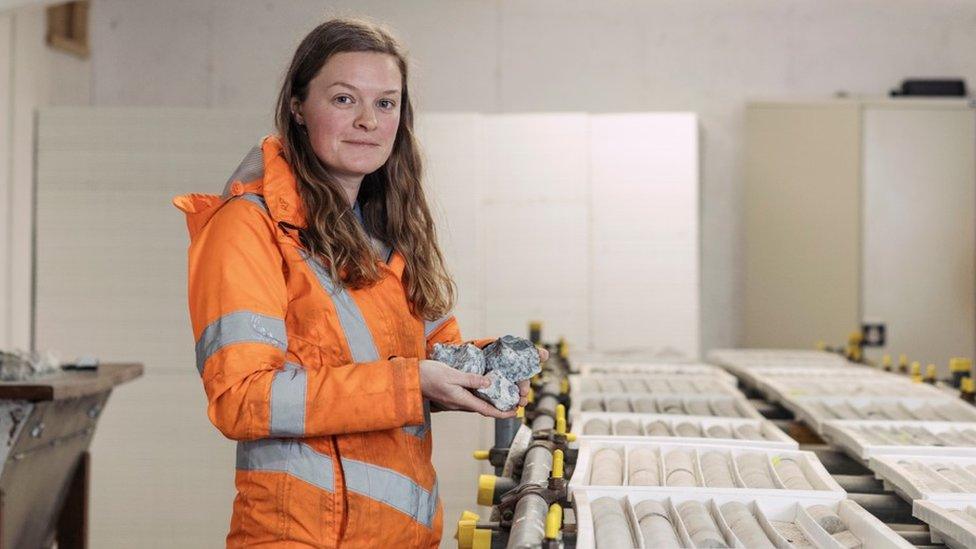
Geologist Rachael Paul says the potential for further development and mining at the site is "exciting"
Rachael's team map the vein and tell the miners which direction to drill into the rock.
They then charge it, blast it and muck it out with trucks. It's taken away to be crushed into a concentrate that contains the gold.
It has taken two years to reach this point in the mine's development.
This main tunnel is more than a kilometre long. More tunnels branch off it. They follow the vein on three levels.
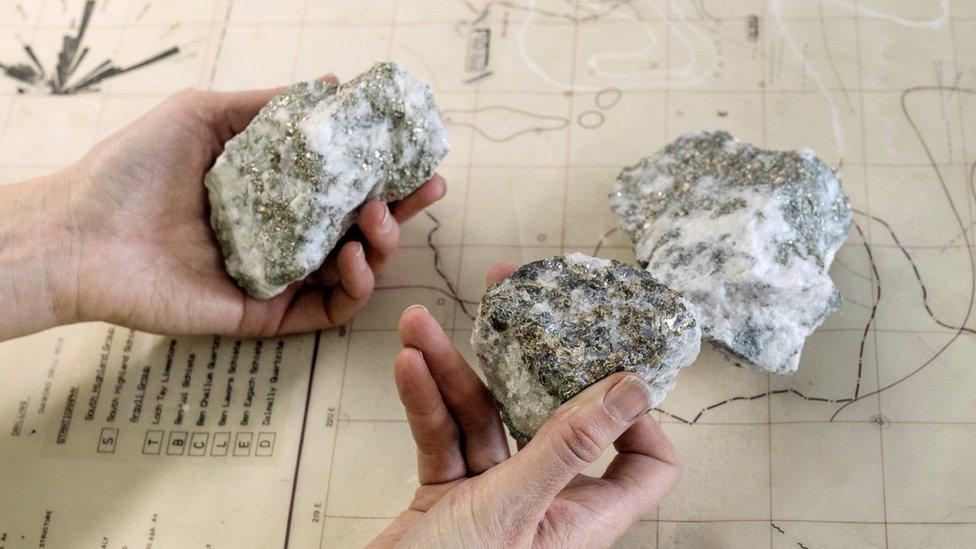
Rocks brought up from the mine then go through a series of grinders
Rachael says the gold vein itself, and others nearby, are "hundreds of kilometres long".
They start in Scotland, go through Northern Ireland and then into Canada. They were once joined up, apparently, when these countries were part of a single giant continent.
"There's endless potential. There could be more below us. As a geologist, it's very exciting," Rachael adds.
"We're lucky here. The gold is comparatively dense. There's about 10g per tonne."
That may sound like searching for a needle in a haystack, but for gold miners, that amount of gold could make this mine very profitable.
From gold flakes to gold bars
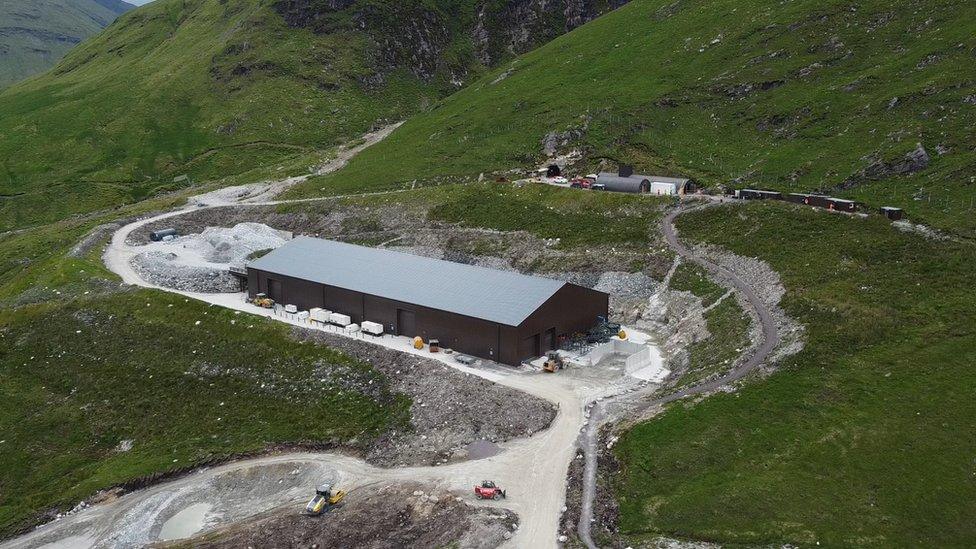
The mine is located in Loch Lomond and the Trossachs National Park
Below the mine entrance, a long low green warehouse is tucked in to the side of the mountain.
It's insulated for sound - a strict rule, as this site is in a National Park. Inside, its noisy.
Tonnes of rock, brought up from the mine, is tumbling through a series of huge grinders.
A massive metal drum spins like a tumble dryer, separating waste rock from gold flakes. The rubble flows along conveyor belts.
What's left looks like wet stony sand. This is as close to gold as we will get. Almost all of this material will be sent abroad for refining.

Most of the material left at the end of the process at Cononish will be sent abroad for refining
For Phil Day, a Western Australian and CEO of Scotgold Resources, there's light at the end of the tunnel, with some "bumper months" ahead.
"With all the work the team's done, it's going to be finally paying dividends," he says.
"People seem to love gold. The more there is uncertainty in the world, the more people want to invest in gold."
Phil says the gold price has gone up in recent years and the workforce here has grown from 15 to 100 over the past two years. They're preparing for a new phase in production.
"Retreat stoping" is an extraction method which Phil says allows them to get more productivity.
"More ounces of gold in a more controlled and better format," he explains.
"That's what allows us to get the gold output of 2,000 ounces (57kg) per month."
'The name of the game is to grow, grow, grow'
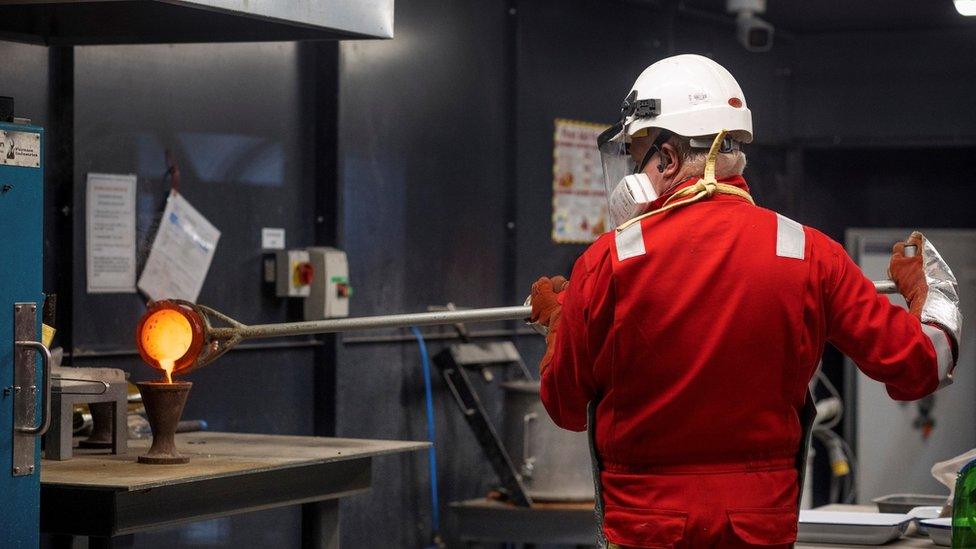
Scotgold Resources says people want to invest in gold
Phil says there's up to nine years left in this mine. But with the potential for secondary gold veins, in parallel to the ones already found, the company hopes "to be able to push that out, to even double that".
And Scotgold Resources could be looking to expand.
"The area that we have stretches to the west just south of Oban, down Campbeltown way, and continues through to Loch Tay and the like. We have 2,900 sq km of area that we can explore," says Phil.
"So once we've done the Cononish vein, and the one next to it, then we'll explore out and see how big we can actually make this company. "
Phil cannot or will not say how many mines, but says that if they can make Cononish profitable, the firm will look to "make satellite mines all the way along".
"That is the name of the game," he adds. "To grow, grow, grow."

Phillip Day wants to expand the company and develop "satellite mines" near Cononish
But there could be tension between mining on that scale and protecting the natural environment.
About 550,000 tonnes of rock is set to be brought out of Cononish over its current projected lifespan. The new seam of gold could see that rise further.
Every new mine would bring out another huge pile of rock, which needs disposal.

Tonnes of rubble flow along conveyor belts in the processing plant
Currently Scotgold Resources are required to spread this rock into the contours of the hillside, then cover it with peat, soil, and plants - in short, to restore the land entirely.
But there's bound to be concern voiced by local and environmental groups, if and when applications are made for new mines.
"We've worked tirelessly to make sure we don't do any harm to people or to the environment. We strictly adhere to the rules that we've been given," says Phil Day.
Gold mining on this scale may seem outlandish. But at £1,500 per ounce, it's too tempting a prospect for some to ignore.
So why does gold prove popular with some investors, despite producing no interest, dividend or earnings?
Lena Komileva, chief economist at G+ Economics in London, says that for many gold is a reassuring investment at a time of great change.
"There is always a reason to buy and hold gold. It is a store of value," she says. "It is a vehicle for transfer of value between generations."
Most of the gold produced at the Cononish mine is sold abroad.
The end product
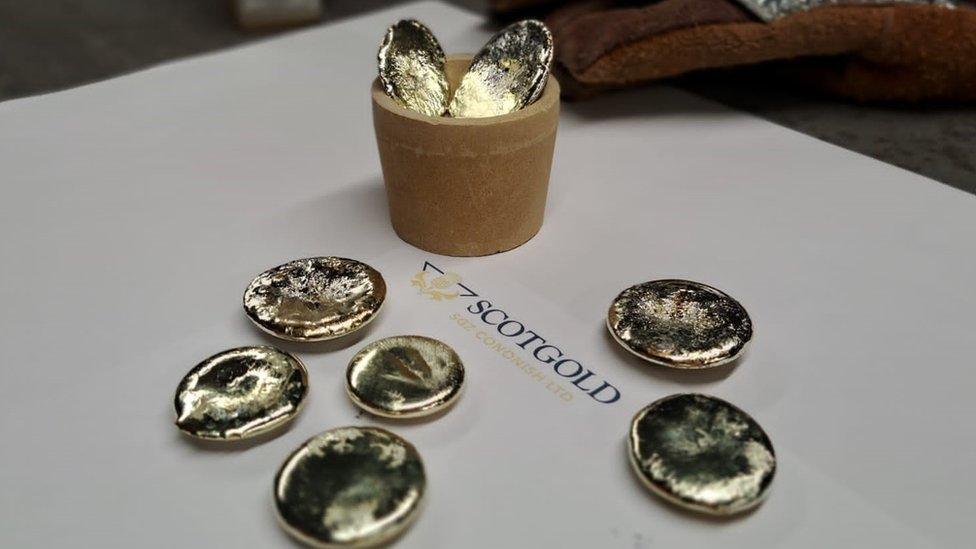
Poured Scottish gold before being refined for sale to a retailer
But a small amount - just a few kilos each year - is now used by two Scottish jewellers, Edinburgh-based Hamilton and Inches, and Sheila Fleet in Orkney.
"It comes to us in this beautiful form - a solid gold bar," explains Frances Desoisa, marketing manager at Hamilton and Inches.
"It's got that slightly rosier tint and a slightly warmer hue."
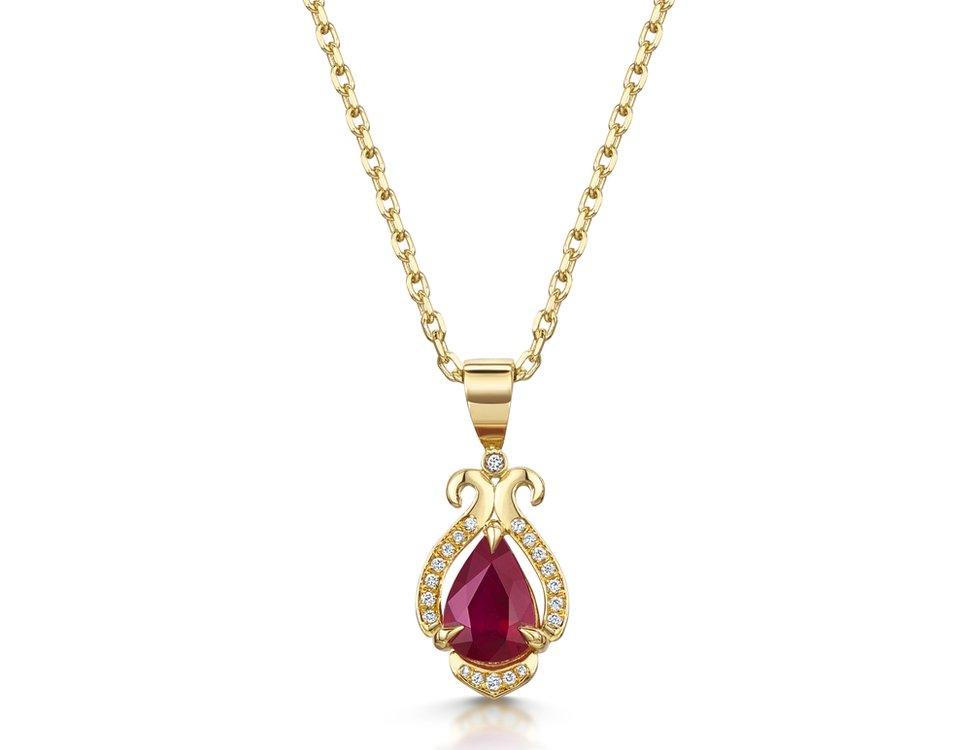
Gold produced at Cononish is now being used by two Scottish jewellers
She adds: "We're all becoming more aware of where things are coming from, whether that's in the food industry or textiles. The jewellery industry is no different to that.
"So the fact it's 'single mine origin', so close to where we are now, our clients want to know about that."
She says Scottish gold appeals to a wide variety of customers.
"We've done a huge range of bespoke commissions - wedding bands, signet rings are very popular, as well the more statement style pieces.
"We also have people from all over the world, who feel this really special connection to Scotland and want to take it home with them.
"We don't know how much Scottish gold there'll be in future.
"That makes it more special and rare."
- Published2 December 2020
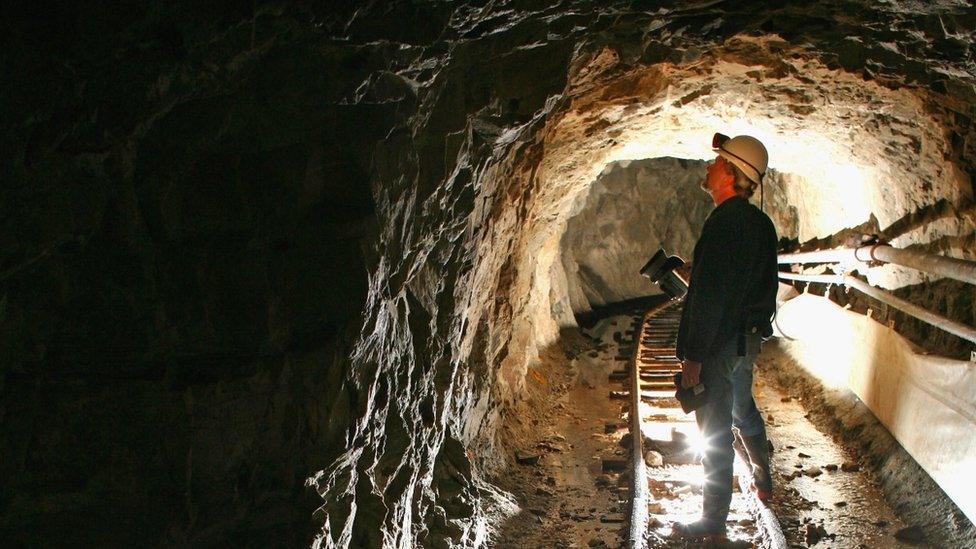
- Published27 April 2021
